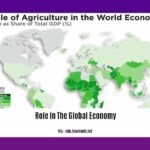This comprehensive guide explores the world of country codes, from the widely recognized “UK” to the formal “GB” and the technicalities of ISO 3166. We’ll uncover the history, meaning, and practical importance of these abbreviations in today’s interconnected world. We’ll also delve into the fascinating nuances of diminutif pays—those informal, shortened country names that add a human touch to global interactions.
Decoding Country Nicknames: Diminutif Pays
Diminutif pays are the nicknames we use for countries, distinct from their formal, standardized abbreviations. While “USA” or “the States” might roll off the tongue easier than “United States of America,” understanding the difference between these informal names and official country codes is crucial for effective communication. This section explores the cultural and linguistic significance of these nicknames, revealing how they shape our understanding of nations.
Why Nicknames Matter
Think of it this way: official ISO codes (like “US”) are like barcodes—functional and efficient. Diminutifs, on the other hand, are like nicknames for friends—suggesting familiarity and shared history. They bring a human element to what might otherwise be a dry, technical subject. Understanding these nuances can significantly enhance cross-cultural communication. For instance, using “the States” in casual conversation feels more natural than the formal “United States of America.” Knowing when to use each form is key.
Examples of Diminutifs
Let’s look at some examples:
- United Kingdom (GB): Commonly called “the UK,” this diminutif distinguishes the political entity from Great Britain (the island).
- United States (US): Often shortened to “the States” or simply “America,” these nicknames reflect casual usage and cultural perspectives.
- Switzerland (CH): The official code “CH” derives from the Latin Confoederatio Helvetica (Swiss Confederation), connecting the present to its historical roots.
Regional and Linguistic Variations
Just like any language, diminutif pays can vary by region and language. How a French speaker refers to Germany (Allemagne) differs from a Spanish speaker (Alemania). These variations offer insights into how language and culture shape our worldviews.
The Evolving Nature of Diminutifs
Diminutif pays constantly evolve, reflecting geopolitical and cultural shifts. New nicknames emerge, old ones fade, mirroring the dynamic nature of our world.
| Country | ISO Alpha-2 | Diminutif (English) | Diminutif (French) |
|---|---|---|---|
| France | FR | France | France |
| Germany | DE | Germany | Allemagne |
| Italy | IT | Italy | Italie |
| Spain | ES | Spain | Espagne |
| United Kingdom | GB | UK, Britain | Royaume-Uni, GB |
| United States | US | US, the States, America | États-Unis, USA |
| Switzerland | CH | Switzerland | Suisse |
This table illustrates the relationship between official ISO codes and common diminutifs. It highlights the human side of how we interact with and refer to different nations. For further exploration of historical figures and events, consider reading about Drusilla of Mauretania the Younger or the invader of Gaul in 451.
Navigating the World of Country Codes: ISO 3166
Country abbreviations, governed by the ISO 3166 standard, are essential for global communication. They’re the invisible threads connecting international systems, ensuring everything from online orders to financial transactions reaches the correct destination. This section clarifies the different types of codes and their practical applications.
Understanding ISO 3166
ISO 3166 is the international standard for country codes, providing a unique identifier for every nation and territory. It’s like a global address book, ensuring clarity and accuracy in international interactions.
Types of Country Codes
ISO 3166 provides three main types of codes:
Alpha-2: Two-letter codes (e.g., “US,” “FR”) commonly used for website domains and quick identification. Their brevity makes them ideal for online systems.
Alpha-3: Three-letter codes (e.g., “USA,” “FRA”) offer more clarity, minimizing confusion between similar country names in multilingual systems.
Numeric: Three-digit codes (e.g., 840, 250) provide a universal identifier regardless of language, aligning with UN Statistical Division codes.
Why These Codes Matter
These codes are fundamental to global operations:
- E-commerce: Ensuring accurate shipping and billing.
- International Banking: Securely verifying locations for transactions.
- Travel and Immigration: Streamlining customs and immigration processes.
Who Uses These Codes?
Governments, businesses, developers, and international organizations all rely on ISO 3166 for efficient communication and data management. They are the backbone of global infrastructure.
ISO 3166-2: Subdivisions Within Countries
Beyond country codes, ISO 3166-2 provides codes for subdivisions like states, provinces, or regions. It’s like adding a street address to the country code, allowing for precise location targeting.
| Country (English/French) | Alpha-2 | Alpha-3 | Numeric |
|---|---|---|---|
| United States/États-Unis | US | USA | 840 |
| France/France | FR | FRA | 250 |
| Canada/Canada | CA | CAN | 124 |
| Germany/Allemagne | DE | DEU | 276 |
| Japan/Japon | JP | JPN | 392 |
| United Kingdom/Royaume-Uni | GB | GBR | 826 |
| Brazil/Brésil | BR | BRA | 076 |
| India/Inde | IN | IND | 356 |
| China/Chine | CN | CHN | 156 |
| Russia/Russie | RU | RUS | 643 |
UK vs. GB: Unraveling the Code Mystery
While “UK” is widely recognized, the official two-letter code is “GB.” This section explains this common point of confusion.
The Difference Between UK and GB
The United Kingdom (UK) comprises four countries: England, Scotland, Wales, and Northern Ireland. Great Britain (GB) refers to the island containing England, Scotland, and Wales. “GB” represents the geographic area, while “UK” represents the political entity.
The Role of ISO 3166
The ISO designates “GB” as the official code, while “UK” is “exceptionally reserved” to avoid disrupting older systems. This ensures minimal confusion. Some experts suggest that as global interactions increase, standardized codes like these will likely become even more critical, driving ongoing research into their application within emerging technologies.
Why This Matters
Using the correct code is paramount. Imagine shipping a package: using the wrong code could lead to delays or misdirection. The same principle applies to domain names and official documentation.
Historical Context
The distinction between GB and UK stems from the UK’s historical and political evolution. Great Britain, the island, predates the United Kingdom, the political state.
Future Considerations
While currently there are no plans to change the ISO codes, it’s important to remember that standards can evolve. Ongoing research and discussion within international organizations may lead to future revisions.
By understanding these distinctions and nuances, you can confidently navigate the world of country codes and abbreviations, fostering clearer and more effective communication in our increasingly interconnected world.
- Unlock 6000+ words beginning with he: A comprehensive analysis - April 20, 2025
- Mastering -al Words: A Complete Guide - April 20, 2025
- Master Scrabble: High-Scoring BAR Words Now - April 20, 2025

















1 thought on “Understanding Country Codes (Diminutifs Pays): A Guide to ISO 3166”
Comments are closed.